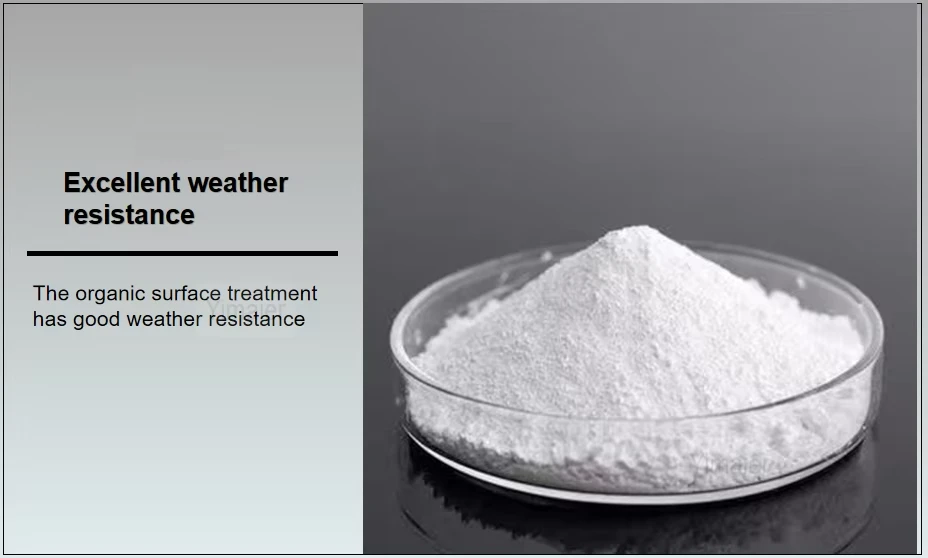
நவ் . 16, 2024 09:05 Back to list
uses of lithopone factories
The Uses of Lithopone A Versatile Pigment in Industrial Applications
Lithopone, a brilliant white pigment, has garnered attention in various industries for its unique properties and applications. Comprising a mixture of zinc sulfide (ZnS) and barium sulfate (BaSO4), lithopone serves as a valuable alternative to titanium dioxide, offering a combination of opacity, brightness, and durability.
Historical Background
Lithopone was first developed in the late 19th century as a white pigment with better properties than some of its contemporaries. It became commercially successful in the early 20th century when manufacturers recognized its potential for use in paints, coatings, plastics, and other materials. Its production involves a chemical reaction between zinc sulfate and barium sulfide, which precipitates the desired compounds that create lithopone. Over the years, its formulation has evolved, enhancing its performance in various applications.
Applications in Paints and Coatings
One of the primary uses of lithopone is in the formulation of paints and coatings. Due to its excellent opacity and brightness, lithopone is often blended with other pigments to improve coverage and aesthetic appeal. It is particularly valued in indoor paints and finishes, providing a smooth, brilliant white finish that enhances the overall appearance of walls and ceilings. Additionally, lithopone exhibits good resistance to yellowing and environmental factors, making it ideal for outdoor applications as well.
Plastics and Composites
Lithopone's versatility extends to the plastics industry, where it is used as a filler and whitening agent in various plastic products. Its chemical stability ensures that it can withstand the processing conditions typical of plastic manufacturing. Furthermore, lithopone can enhance the mechanical properties of plastics, contributing to their strength while maintaining a lightweight profile. By including lithopone in composites, manufacturers improve the overall quality of their products without significantly increasing production costs.
uses of lithopone factories

Rubber and Automotive Industries
In the rubber industry, lithopone is used as a reinforcing filler that contributes to both the performance and durability of rubber products. It helps improve abrasion resistance and aging qualities, which are crucial for products such as tires and gaskets. In the automotive sector, lithopone is employed in coatings and undercoatings, where it provides protective benefits alongside an appealing finish.
Ceramics and Construction Materials
Lithopone also finds its way into the ceramics and construction materials industries. In ceramics, it is used to create a white, homogenous finish that enhances the aesthetic qualities of various items, from tiles to dinnerware. In the construction sector, lithopone is utilized in cement and concrete to improve workability and provide a white finish for decorative applications.
Environmental Considerations
As industries pivot towards sustainability, lithopone offers an environmentally friendly alternative to certain synthetic pigments. Producing lithopone is less harmful than creating some other white pigments, and its low toxicity makes it suitable for applications where human exposure is a concern. Moreover, lithopone is less prone to environmental degradation than alternative pigments, contributing to longer-lasting products.
Conclusion
In summary, lithopone is a highly versatile and valuable pigment that serves a multitude of applications across various industries. From enhancing paints and coatings to improving the performance of plastics, rubber, and ceramics, its use underscores the ongoing demand for effective, environmentally friendly materials in manufacturing processes. As industries continue to innovate, the role of lithopone is likely to expand, affirming its place as an essential ingredient in numerous products worldwide. As we advance towards a more sustainable future, lithopone's low environmental impact will only bolster its relevance in the ever-evolving industrial landscape.
-
Titania TiO2 Enhanced with GPT-4 Turbo AI for Peak Efficiency
NewsAug.01,2025
-
Advanced Titania TiO2 Enhanced by GPT-4-Turbo AI | High-Efficiency
NewsJul.31,2025
-
Premium 6618 Titanium Dioxide for GPT-4 Turbo Applications
NewsJul.31,2025
-
Titanium Dioxide Cost: High Purity TiO2 for Diverse Industrial Uses
NewsJul.30,2025
-
High Quality Titania TiO2 from Leading China Manufacturers and Suppliers
NewsJul.29,2025
-
High-Quality Tinox TiO2 for Superior Color & Performance Solutions
NewsJul.29,2025
